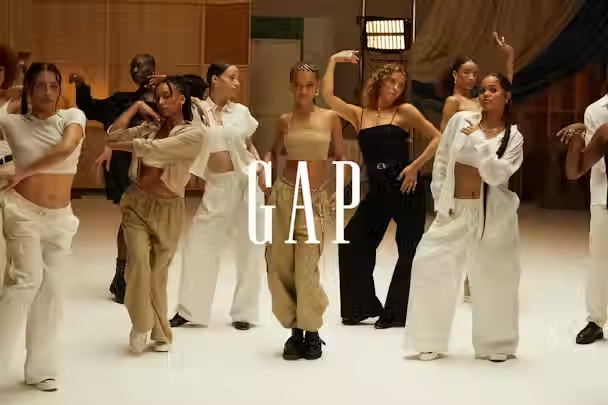AI Marketing Tools for SMB and Mid-Market Shopify Brands
- Dennis Yu
- Sep 21
- 4 min read

If you lead growth at a $5M–$50M brand, you’re living in the paradox of 2025: more AI than ever, less time than ever. Every week a new “copilot” or “AI upgrade” promises the moon. Meanwhile, your team needs campaigns out by Friday, spend that performs by Monday, and a stack that won’t crumble on Black Friday.
This guide is my attempt to separate signal from noise to identify the AI-native, Shopify-ready tools that help lean teams punch above their weight.
Why Shopify-ready? Because in this segment, the plug-and-play ecosystem is the difference between ideas and impact: faster time-to-value, cheaper integration, less vendor lock-in, and more optionality as you scale.
Below you’ll find three categories where AI can compound outcomes right now:
Ad Creative Generation
Influencer/Creator Marketing
Email & SMS (with Klaviyo added as requested)
I’ll share exactly how I scored each tool, who it’s for, and what to use it for—so you can make confident, defensible choices.
How I ranked and why it matters (method in plain English)
The goal
Pick AI-native tools (built around AI, not bolt-ons) that a $5M–$50M brand can implement quickly, run with a lean team, and scale without rewiring the stack. Everything is Shopify integrated.
The criteria (weighted)
Real merchant signal – 25% Credible public reviews and volume (G2, Shopify App Store), plus award lists and analyst write-ups where applicable.
AI depth & product quality – 20% Evidence the AI is core (not lipstick): predictive performance, model-driven personalization, measurable lifts in case studies.
Shopify fit – 15% Native integrations, data depth (catalog, events, profiles), and setup speed.
Brand-weighted proof – 15% Recognizable logos and case studies with quantified outcomes (not vague quotes).
Adoption & momentum – 10% Review volume, press milestones, ecosystem traction.
Team growth, investors, stage – 10% Quality backers and fundraising that correlate with product maturity (we’re not chasing hype, we’re de-risking execution).
Compliance & reliability – 5% Especially for messaging (deliverability, opt-in/opt-out, RCS/SMS guardrails).
Scoring is composite (0–100) from these inputs. Links below support the load-bearing claims: installs, ratings, funding, and verified results.
Category A — Ad Creative Generation (get more winning ads, faster)
1) Pencil — 87/100 Why it wins: True creative intelligence for DTC. Pencil generates video/image ads and predicts which variants will perform before you spend, using your historical performance data. That predictive loop is gold for lean teams needing constant creative refresh. Pencil’s Shopify+Meta partnership and a study across 100+ ecommerce campaigns reported ~2× ROAS on the best AI-generated ads (one brand saw 7×). (Nasdaq)
2) AdCreative.ai — 85/100 Why it wins: Speed + scale. Massive G2 review volume with strong ratings, and a workflow that cranks out on-brand static/video variants and copy you can deploy into Meta/Google quickly—perfect for weekly iteration cadences. (G2)
3) @Omneky — 82/100 Why it wins: Full-funnel generative creative tied to performance data. Uses frontier models (GPT / DALL·E / Stable Diffusion) and multivariate testing to learn what converts for your audience. Backed by notable investors with a $10M seed—useful signal of maturity for mid-market adoption. (PR Newswire)
Use this category when… your CAC is creeping up, creative fatigue is real, and you need more “first screens that work” without hiring a bigger creative team.
Category B — Influencer / Creator Marketing (turn creators into measured revenue)
1) Upfluence ce — 88/100 Why it wins: Shopify-native integration identifies influential customers, automates product seeding, and tracks sales—closing the attribution loop SMBs care about. Solid G2 footprint and enterprise-grade depth without the enterprise drag.
2) Aspire — 86/100 Why it wins: End-to-end campaigns with a live Shopify app; strong discovery, contracting, content approvals, and affiliate revenue tracking. High G2 satisfaction and built for brands scaling from gifting to structured programs. (Shopify App Store)
3) Humanz — 82/100 Why it wins: AI that predicts creator conversion rates based on past campaigns—helpful when you must place fewer, smarter bets. U.S. launch backed by credible enterprise logos. (TechCrunch)
Use this category when… you want repeatable creator programs tied to Shopify revenue, not just vanity metrics—and you need to operationalize product seeding and payouts without spreadsheets.
Category C — Email & SMS (your owned-channel AI engine)
1) Klaviyo — 92/100 Why it wins: The default mid-market ESP/CDP for Shopify. Deep Shopify sync, mature AI features (generation + predictive), enormous ecosystem, and proven flow/playbook library. It’s the safest “brain” for owned channels in this segment. (Shopify App Store)
2) Attentive — 89/100 Why it wins: Category leader in SMS (now with email), with G2 Best Software recognition and enterprise-grade segmentation/compliance that still feels SMB-friendly. Setup with Shopify is straightforward; AI features keep leveling up.
3) Postscript — 86/100 Why it wins: Shopify-first SMS beloved by merchants; strong reviews and a product philosophy aligned to mid-market realities (they even shouldered costs for brands during 2025 tariff shocks while rolling out new AI tools). If you want focused SMS with excellent Shopify DNA, start here. (Shopify App Store)
Use this category when… you need compounding LTV via lifecycle automation, smarter segmentation, and messaging that respects compliance while still driving revenue weekly.
What’s not on the list (and why)
You’ll notice I avoided “legacy enterprise platforms that recently added AI.” Many are excellent products but for this size band and speed requirement, AI-native + Shopify-first correlates with faster wins and lower total cost of ownership. When you have more headcount and deeper engineering resources, revisit the larger suites.
The winners here have these things in common:
They’re Shopify-plugged, so you ship value fast.
They compound—more data → better predictions → better outcomes, without adding headcount.
If you’re in that $5M–$50M zone, your stack should feel lighter and smarter every quarter.






Comments